Analysis: Armored and Combat Vehicles Showcased at Russia's Victory Day Military Parade 2024
Despite the ongoing conflict in Ukraine, Russia has decided to commemorate Victory Day with a military parade scheduled for May 9, 2024, on Moscow's Red Square. Russian army units are already engaged in initial rehearsals. Photos taken during the rehearsals on April 26, 2024, in Moscow, Russia, depict the preparations underway. The number and variety of combat vehicles participating in the 2024 parade are nearly identical to the previous year, except for the Fenix and Linza tactical vehicles. Modern tanks, self-propelled artillery and other tracked vehicles are notably absent, as they are no doubt mobilized to the front unless captured by the Russian army and put on display in Red Square.
Follow Army Recognition on Google News at this link
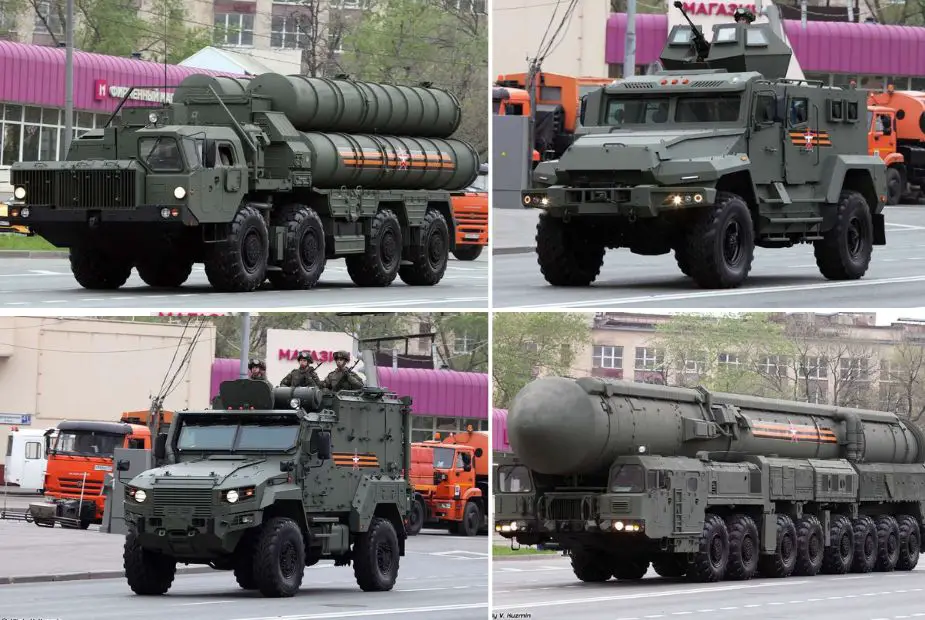
The Russian Army Victory Day Military Parade 2024 will feature a display of armored and combat vehicles (Picture source: Vitaly Kuzmin)
On April 26, 2024, Moscow and Saint Petersburg held nighttime rehearsals for the Victory Day military parade, while Russian forces continued their offensive to seize territories in eastern Ukraine.
On May 9, Russia commemorates the 77th anniversary of the Soviet defeat of Nazi Germany with a military parade showcasing ground and air forces on Moscow's Red Square, aiming to demonstrate the military prowess of the Russian armed forces. Similar military parades are also organized on the same day in several major cities across Russian territory.

K-53949 Fenix armored vehicle - the version of Typhoon K-53949 with domestic parts and components (Picture source: Vitaly Kuzmin)
K-53949 Fenix armored vehicle
The K-53949 Fenix is a Russian armored personnel carrier that first entered production in the mid-2010s and was officially introduced into service in 2019. It is part of the Kurganets-25 family of vehicles, which is intended to serve as a modular platform for various types of armored vehicles.
The Fenix offers advanced protection features, including a high level of ballistic and mine resistance. Its armor can withstand impacts from heavy machine guns and shell splinters, while its V-shaped hull provides enhanced protection against mines and improvised explosive devices (IEDs). The vehicle is equipped with a remote weapon station that can be armed with a variety of weapons, including a 30mm cannon and coaxial machine guns, making it highly versatile on the battlefield. Its modular design allows for different configurations to suit various combat roles, from troop transport to command and control, making it a critical asset in modern military operations.
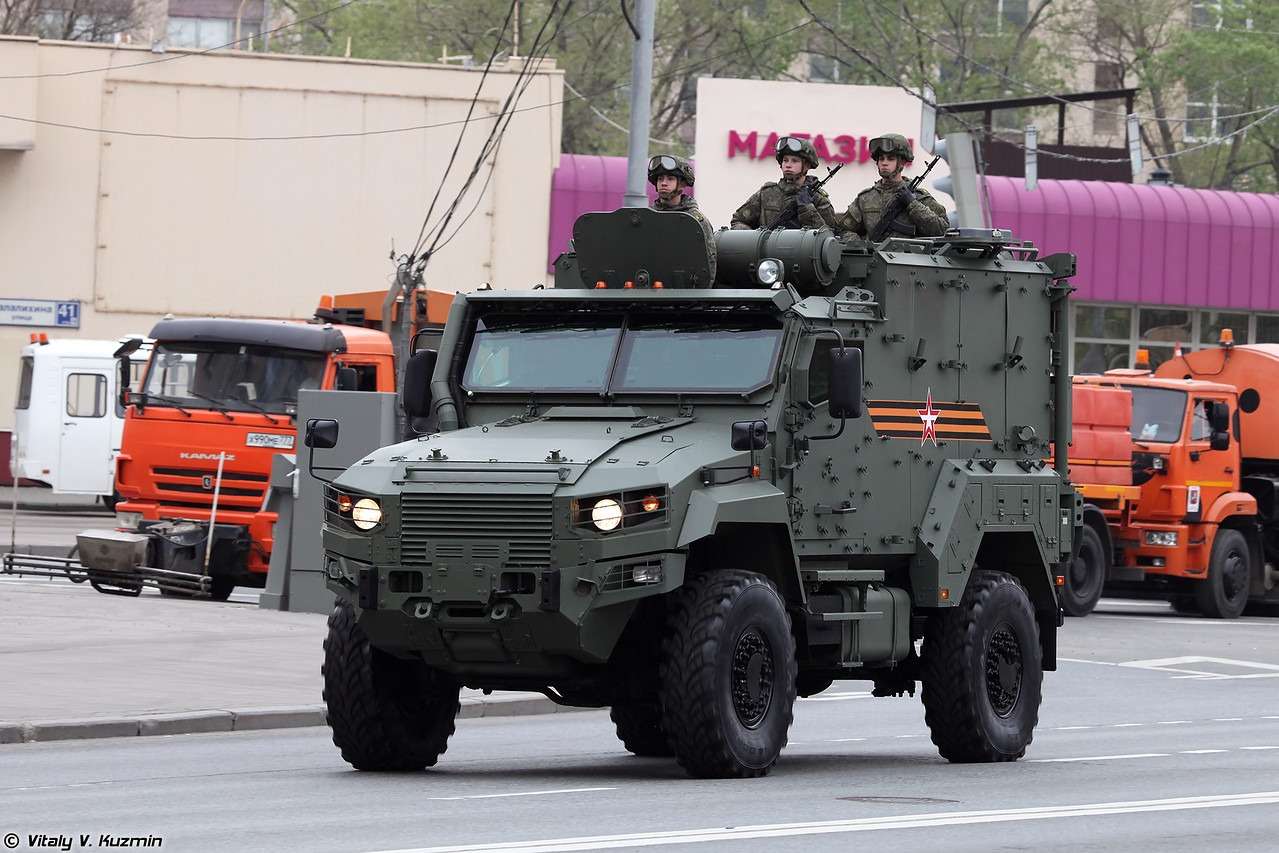
ZSA-T Linza armored medical vehicle, second version with domestic parts and components (Picture source: Vitaly Kuzmin)
ZSA-T Linza armored medical vehicle
The ZSA-T Linza armored medical evacuation vehicle is a relatively recent addition to the Russian military's fleet of support vehicles, having entered into production and service around the early 2010s. It is specifically designed to provide quick and protected medical evacuation on the battlefield, ensuring that injured personnel can be transported to safety under armor protection.
The vehicle is based on a standard armored personnel carrier chassis, offering substantial protection against small arms fire and shell splinters. The interior is equipped with medical facilities to stabilize and treat wounded soldiers during transportation. Linza’s design emphasizes the integration of advanced communication and navigation systems, which facilitate efficient operation in diverse and challenging environments. This capability ensures that the ZSA-T Linza is a vital component in modern military operations, enhancing the survivability and effectiveness of troops on the ground.
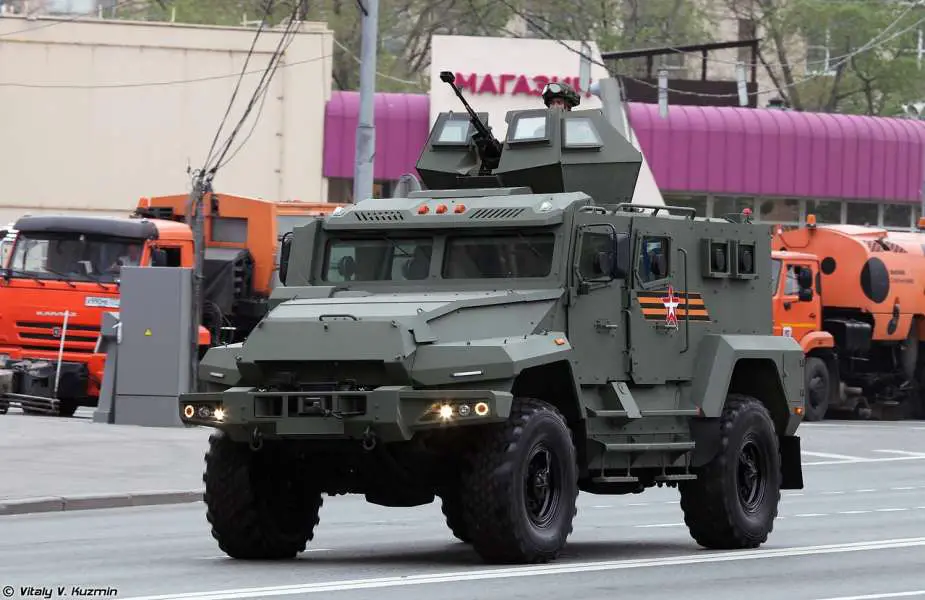
AMN-590951 Spartak armored vehicle (Picture source: Vitaly Kuzmin)
AMN-590951 Spartak armored vehicle
The AMN-590951 Spartak is a light armored vehicle developed by the Russian military, which entered production and was subsequently deployed into service in the late 2010s. The Spartak is designed primarily for reconnaissance and security roles, emphasizing agility and rapid deployment capabilities.
This vehicle features light armor that protects against small arms fire and shrapnel, making it suitable for quick maneuvers in both urban and rural environments. The Spartak is typically armed with a machine gun mounted on a roof turret, allowing for defensive and offensive operations. Its compact size and mobility are crucial for tasks such as patrolling, escorting convoys, and performing surveillance missions, making it a versatile asset in modern military operations.

TEL Transporter Erector Launcher vehicle of S-400 long-range air defense missile system (Picture source: Vitaly Kuzmin)
S-400
The S-400 Triumph, a long-range surface-to-air missile system produced by Almaz-Antey, was introduced into service with the Russian Armed Forces on April 28, 2007, as a replacement for the S-300 air defense system. This system offers modular capabilities through the use of anti-aircraft missiles that have varying effective ranges, allowing for the establishment of layered air defense and non-strategic anti-missile defense systems. With a maximum range of 400 km, the S-400 missile is capable of engaging all types of aerial targets with high precision.
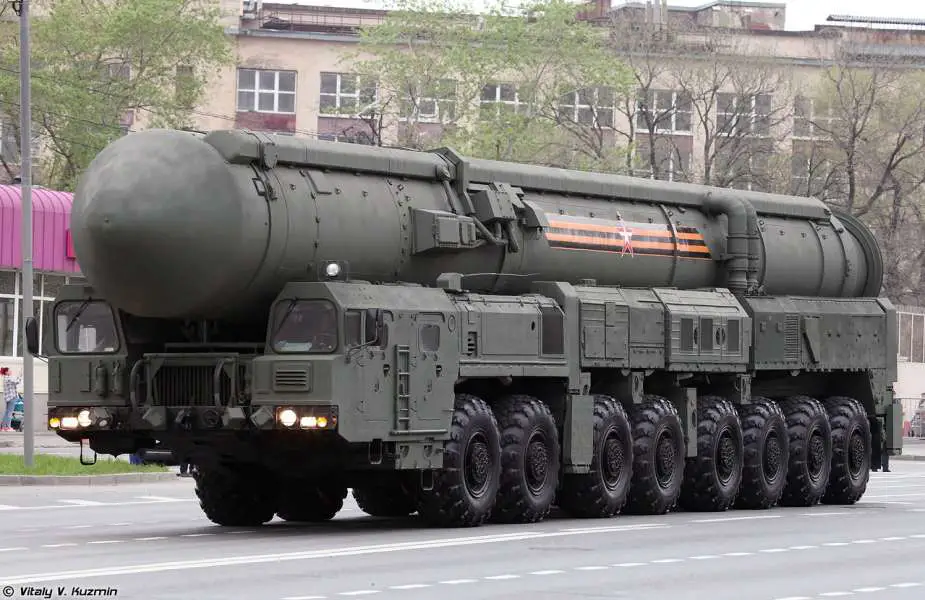
RS-24 Yars ICBM InterContinental Ballistic Missile (Picture source: Vitaly Kuzmin)
RS-24 Yars ICBM
The RS-24 Yars is a Russian-manufactured mobile nuclear intercontinental ballistic missile (ICBM), which can be mounted on a truck carrier or housed in silos. Production of the Yars began in 2004, and its vehicle layout is akin to that of the Topol-M SS-27. The RS-24 missile is a three-stage, solid propellant ICBM capable of carrying multiple independently targetable reentry vehicles (MIRV), with a range of 10,500 km.
This missile employs an advanced guidance system that utilizes both inertial navigation and the Glonass system, similar to the system used in the RS-12M2 (Topol-M SS-27). It boasts an accuracy with a circular error probability (CEP) of approximately 250 meters. The RS-24 has a minimum range of 2,000 km and a maximum range of 10,500 km and can carry up to 10 warheads.

K-17 VPK-7829 Bumerang BMP-K 8x8 wheeled armored IFV Infantry Fighting Vehicle (Picture source: Vitaly Kuzmin)
K-17 VPK-7829 Bumerang BMP-K
The K17, also known as Bumerang, is a modern 8x8 armored personnel carrier developed by the Russian defense industry to replace the aging BTR series used by the Russian armed forces. The vehicle was first presented during the RAE 2013 International Exhibition of Arms and military equipment in Nizhny Tagil, with its project details being exclusively shown to the Russian Prime Minister.
The Bumerang can accommodate a crew of 10, including a driver, commander, gunner, and seven infantrymen. Its hull is designed to withstand small arms fire and shell splinters. Additionally, the vehicle features bolt-on ceramic armor for enhanced protection, capable of resisting 14.5 mm armor-piercing rounds and shrapnel from 152 mm artillery shells.
Mounted centrally on the hull, the Bumerang K-17 is equipped with an electrically operated unmanned turret, which houses a 2A42 30mm automatic cannon. To the left of the cannon, a 7.62mm coaxial PKT machine gun is installed. Additionally, two Kornet-EM anti-tank guided missile launchers are positioned on either side of the turret, enhancing its firepower against various targets.

BTR-82AT 8x8 wheeled APC Armored Personnel Carrier vehicle (Picture source: Vitaly Kuzmin)
BTR-82AT 8x8 APC
Unveiled in August 2021 by the Russian company Military-Industrial Company (VPK) at the Army-2021 defense exhibition in Moscow, the BTR-82AT is an upgraded version of the BTR-82A 8x8 armored personnel carrier (APC).
Equipped with a fully electric remote weapon station, the BTR-82AT is armed with a 30mm automatic cannon and a 7.62 mm PKTM machine gun. For engaging heavily armored targets like tanks or heavy APCs/IFVs, it also accommodates portable Kornet-E anti-tank guided missiles. The BTR-82AT can transport up to 10 military personnel. It is powered by a 300hp turbodiesel engine and can achieve a maximum road speed of 80 km/h. The vehicle has a total weight of 17,250 kg.
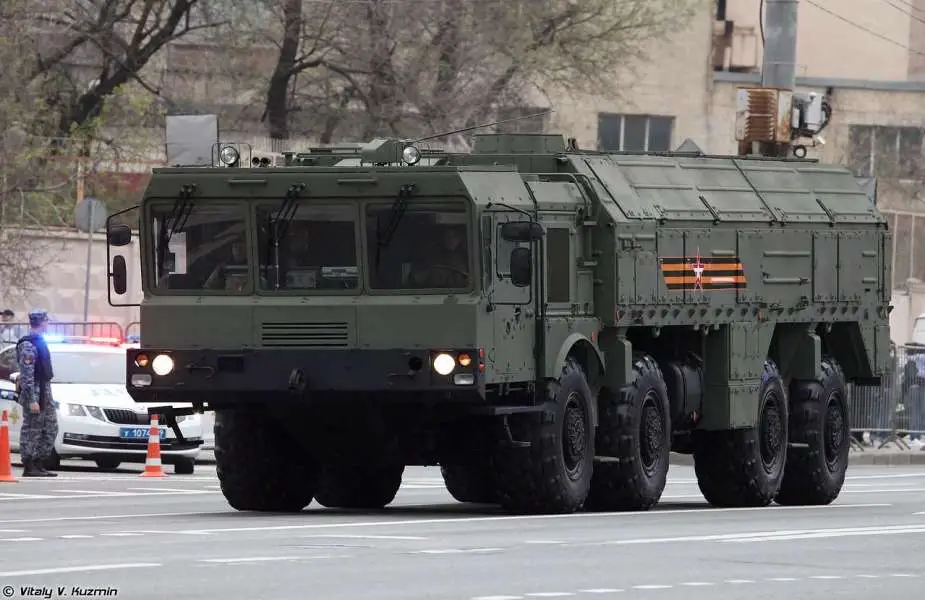
Iskander-M 9P78-1 TEL mobile tactical missile (Picture source: Vitaly Kuzmin)
9P78-1 TEL Iskander-M
The Iskander-M missile system, also known as the SS-26 Stone, is a short-range tactical missile system designed and manufactured in Russia. It was developed to replace the Oka SS-23 SPIDER system, which was decommissioned under the Intermediate-Range Nuclear Forces (INF) Treaty. The development of the Iskander-M was carried out by the Kolomna Engineering Design Bureau during the 1990s under the project name "Tender". With a firing range of 400 km, the Iskander-M has the potential for extension to distances violating the INF Treaty, reaching up to 500 km.
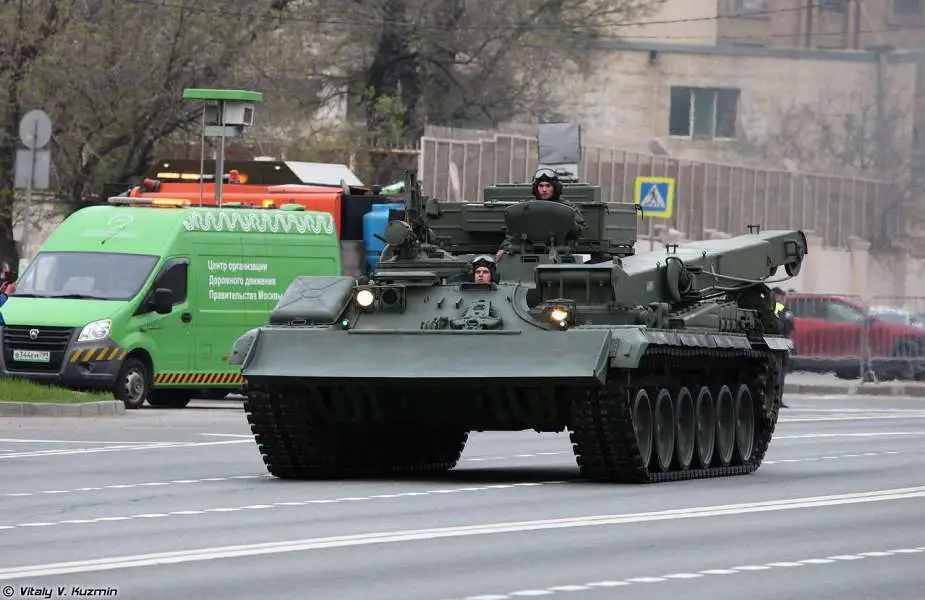
BREM-1M armored recovery vehicle (Picture source: Vitaly Kuzmin)
BREM-1M
The BREM-1M is an armored recovery vehicle designed to support armored units on the battlefield. It was produced and entered into service in Russia, with the exact dates varying depending on specific procurement and deployment schedules. The main purpose of the BREM-1M is to recover and repair damaged or immobilized armored vehicles under combat conditions.
Equipped with a range of tools and equipment, the BREM-1M is capable of towing, lifting, and repairing various armored vehicles, including tanks. Its robust armor protects the crew during recovery operations, while features like a crane, winch, and dozer blade enhance its functionality. The BREM-1M plays a critical role in maintaining the operational readiness of armored units, ensuring that damaged vehicles can be quickly restored to service on the battlefield.
Defense News April 2024


























